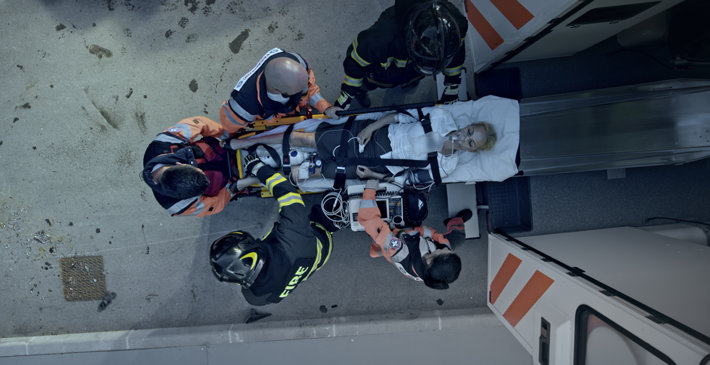Stimulant Addiction Now Leading to More Overdose Deaths

Through much of the 2000s and 2010s, while the opioid addiction crisis skyrocketed and received most of the media attention, a stimulant abuse crisis also began to develop, a critical issue mainly centering on cocaine and methamphetamine addiction. Going almost completely unaddressed (as much of the nation was focusing on the opioid crisis), stimulant abuse in America soared, with addicts experimenting with cocaine, meth, and other drugs, often at the same time.
Fast forward to the present day and stimulants are causing a surge in overdose deaths. That caught public health officials off guard, as stimulants had not been historically associated with high likelihoods for fatal overdoses. The reason for the surge in deaths? Many of the deaths occurred because addicts were mixing stimulants with opioids, either knowingly or unknowingly.
Is There a New Epidemic on the Horizon?
In “Stimulant Use Disorders in the United States—Is Another Epidemic on The Horizon?” study authors Das and Kutscher chronicle the steady rise of stimulant-related fatalities in the United States. According to the data, while 130 Americans die every day from opioid-related causes, research shows that 40 Americans now die every day from cocaine-related causes. That number reflects a stark increase from just 10 cocaine deaths per day in 1999.
Most of the surge in cocaine-related deaths has happened recently. From 2013 to 2018, cocaine deaths tripled in the United States. While cocaine has always been a harmful substance, the alarming issue in recent years is that cocaine use is killing Americans in increasing numbers.
A similar trend is occurring with methamphetamine. According to the data, methamphetamine claimed 35 American lives per day in 2018. Compare that to just two deaths per day in 1999. And just as with cocaine deaths, methamphetamine-related deaths did not skyrocket until more recently. From 2012 to 2018, methamphetamine deaths more than quadrupled.
The United States is already struggling with a fatal crisis in opioid overdose deaths, with tens of thousands of Americans losing their lives every year to opioid overdoses. Is the nation on the verge of experiencing two more fatal overdose crises with surges in both cocaine deaths and methamphetamine deaths?
The Culprit in Soaring Overdose Deaths

Cocaine and methamphetamine are not new drugs. Addicts have used both for decades. So why is it that both substances are suddenly leading to more deaths?
The culprit is illegally manufactured fentanyl, an extremely potent synthetic opioid that is being mixed into various stimulant drugs like cocaine and meth.
Again referring to the data from “Stimulant Use Disorders in the United States—Is Another Epidemic on The Horizon?,” it was discovered that more than three in 10 overdose deaths in the United States involved opioids and stimulants. Only about one in 10 overdose deaths involve stimulants alone.
The critical issue is that batches of cocaine and methamphetamine are now being mixed with fentanyl, often without addicts knowing. That makes for a potent, highly dangerous hybrid drug, a concoction of both cocaine and fentanyl or both meth and fentanyl.
The Centers for Disease Control and Prevention reported sharp increases in overdose deaths involving cocaine and meth, indicating similar findings. According to CDC data, as many as one in five overdose deaths now involve cocaine, with psychostimulant deaths (usually methamphetamine deaths) increasing by 37% just in 2017 alone. As illicitly manufactured fentanyl becomes more common among clandestine drug manufacturers, traffickers, and dealers, we can expect more people to die from taking drugs that historically did not lead to huge numbers of overdose deaths.
The common denominator in the expanding drug crisis is that extremely addictive and highly lethal synthetic opioid drugs like fentanyl are being introduced to drug-using populations that previously did not experiment with opioids (like people whose drug of choice is cocaine or meth).
“The involvement of opioids in stimulant-involved deaths is increasing. Nearly three-quarters (72.7%) of cocaine-involved overdose deaths also involved an opioid in 2017...”
Quoting CDC data, “The involvement of opioids in stimulant-involved deaths is increasing. Nearly three-quarters (72.7%) of cocaine-involved overdose deaths also involved an opioid in 2017. Previous data have indicated that synthetic opioids, in particular, appear to be driving increases in cocaine-involved overdose deaths. Although increases in psychostimulant-involved deaths have occurred largely independent of opioids, co-involvement of opioids in psychostimulant-involved deaths increased sharply from 2015–2017. Approximately half (50.4%) of psychostimulant-involved deaths also involved opioids in 2017.”
Overcoming addiction in America is going to take the recognition that this is a multi-substance crisis, i.e., a public health emergency that involves several drugs. Quoting Dr. Nora Volkow, the director of the National Institute on Drug Abuse, “Although we often talk about individual drugs and drug use disorders in isolation, the reality is that many people use drugs in combination and also die from them in combination. Although deaths from opioids continue to command the public’s attention, an alarming increase in deaths involving the stimulant drugs methamphetamine and cocaine is a stark illustration that we no longer face just an opioid crisis. We face a complex and ever-evolving addiction and overdose crisis characterized by shifting use and availability of different substances and use of multiple drugs (and drug classes) together.”
Addiction Treatment—Overcoming Cocaine and Meth Abuse
Opioid addiction, whether it manifests as heroin addiction, misuse of opioid pain reliever pills, fentanyl abuse, or the misuse of stimulant drugs that have opioids mixed into them, is extremely harmful and potentially fatal.
If you know someone who is addicted to opioid drugs, meth, or cocaine, someone who is using addictive substances and who cannot stop using them, please contact Narconon today. It’s not right to look at someone who is using drugs and think, “This person has nothing to do with me.” If they are in your environment, community, neighborhood, workplace, group of friends, or family, they have everything to do with you. Please do what you can to get them help. When addicts get better, we all do better.
Sources:
- https://jamanetwork.com/channels/health-forum/fullarticle/2774570
- https://www.cdc.gov/nchs/products/databriefs/db356.htm
- https://www.cdc.gov/drugoverdose/data/otherdrugs.html
- https://www.drugabuse.gov/about-nida/noras-blog/2020/11/rising-stimulant-deaths-show-we-face-more-than-just-opioid-crisis


 ®
®